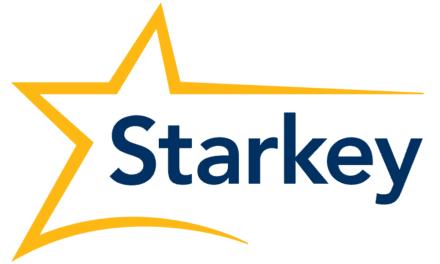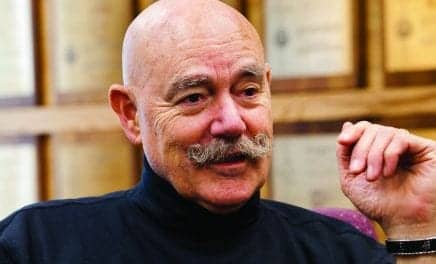Patient Care | May 2016 Hearing Review
How connecting with patients on an emotional level builds trust and business success
The Discovery Conversation focuses on creating an emotional connection with the client by asking layered “digging” questions to uncover their personal story around how not hearing well impacts that individual during the most important situations in their life. Those in the industry who adopt and consistently use The Discovery Conversation are seeing success within their clinic.
This article is the third in a three-part series on in-clinic success. Part 1 (February 2016 HR)1 defined the concept of in-clinic success. Part 2 (March 2016 HR)2 looked at three ways to attract and retain more clients. Part 3, the final installment, will examine how some hearing healthcare professionals have forged stronger emotional connections by understanding their patients’ “why.”
Whether you are buying a car or a pair of hearing aids, you want to do your homework before you purchase. This might mean doing research on the Internet, talking with friends and family about their experiences, or turning to social media.
As consumers, we now all have access to enormous amounts of information and are more in control of the purchase and service process. This certainly is true in the hearing healthcare industry, where people regularly search for information about hearing aids and hearing loss to help them make sense of a confusing and emotional purchase. They are also looking for answers that go beyond price, features, facts, and figures.

Over the past several months, I’ve been out in the market working with HHCPs, helping them fine-tune various aspects of their patient experience. I spend time connecting them with a mature consumer’s mindset and decision-making process (we call it understanding their “why,” in recognition of Simon Sinek’s groundbreaking book, Start with Why3) and refining their sales and patient-care approach to make sure they are asking the right questions in the right way. In just this short time, I’ve noticed that HHCPs who consistently apply these best practices are not only seeing changes in their patient relationships, but they are actually seeing positive changes in themselves.
In this third and final article for the series, I want to discuss the most important step toward building trust—having a conversation with your patient that is focused on the emotional side of the patient journey. Using a real-world example drawn from my recent experience in the field, we’ll break down into simple steps how one HHCP discovered her patient’s “why” using The Discovery Conversation method (Figure 1).

Figure 1. The Discovery Conversation turns the conventional approach inside out. We start by understanding why the patient wants to hear better, with a focus on building rapport and understanding their needs and concerns. The goal is to connect with them on an empathetic level, uncover their true motivations for seeking hearing help, and motivate them to “own” their situation and create a partnership with them to solve their key hearing obstacles. It all starts with increasingly focused questions and uncovering the “why” surrounding the need for a change.
The Discovery Conversation focuses on creating an emotional connection with the client by asking layered “digging” questions to uncover their personal story around how not hearing well impacts that individual during the most important situations in their life. We are all more motivated to make decisions and enact behavioral change by triggers in our emotions versus simply rational thoughts.
To illustrate how The Discovery Conversation can help create that important emotional connection, let me share with you a recent experience I had, working with one of our HHCP clients. A prospective patient, Don, arrived in the clinic accompanied by his wife. Don was a current hearing aid user. At the beginning of the intake interview, Don kept saying things to the HHCP we all regularly hear. He said, “I have trouble with background noise and crowds, trouble at restaurants, I can’t hear my wife at home,” and so on. Normally, the HHCP would have stopped here after some casual conversation and explained that Don’s hearing loss was the root cause for these issues. Instead, using the Discovery Conversation Method, she asked several more questions to uncover his emotional response:
- “What two areas in your life are most important for you to hear better?”
- “When was the last time you were in that specific environment and had trouble hearing?”
- “Tell me more about that.” “How does this affect your enjoyment of…?” “How does this impact your wife when she’s with you?
- “Tell me about another recent time when you were in crowds or a noisy place and didn’t hear as well as you’d like.”
- “What was the impact of this for you and your wife?”
By asking these simple open-ended questions, and having a genuine sense of curiosity, here is what our HHCP learned about Don:
- Don has breakfast every morning with a group of friends he has known since 8th grade. When he can’t hear them, he leans across the table and one guy in particular teases him about it constantly. Don shrugs the teasing off, but says it actually does bother him, and he doesn’t enjoy breakfast some days.
- Don struggled to hear the ceremony at his granddaughter’s wedding 2 months ago. While at the reception, he actually walked away from conversations because he couldn’t understand. While he tried to ignore the issue, Don said it was difficult. His wife actually reached out and touched his arm as he was recalling this memory.
After pulling these two emotional stories from Don, the HHCP was able to empathize with his situation and use these personal situations as the basis of the problem they were going to solve. She then asked one final qualifying question. “Don, if I could help improve your ability to understand your friends at breakfast and get your buddy off your back, and help you hear better at family get-togethers, would this be important to you?” Without hesitating for a second, Don laughed and said, “Absolutely.”
According to consumer psychologist Peter Noel Murray, when people are confronted with a decision, emotions from previous related experiences affix values to the options they are considering. These emotions then create preferences that drive decisions. However, the hearing healthcare professional has typically approached conversations with patients from the outside in. By this I mean, we’ve always started with the rational solution: the price, the best features, and the technology, and convince people based on the audiogram that they need hearing aids. Then we talk to them about the process, including the protocols, testing, and trial period.
The Discovery Conversation turns that approach inside out. We start by understanding why the patient wants to hear better. We focus on building rapport, by getting to know the person and listening to their concerns. And finally, we empathize with the emotions they are expressing: the frustration and anger they may feel, the desire they have to reconnect with their life, family, and friends. Our goal is to motivate them to arrive at the decision to purchase hearing aids—and to do less convincing and telling.
Building an emotional connection and understanding your client’s “why” takes patience and practice. Some patients will volunteer information right away and tell you everything you want to know. Others may take more time to disclose the information, and you will need to build more rapport and trust.
If there is one thing I am certain, those in the industry who adopt and consistently use The Discovery Conversation are seeing success within their clinic. And, patients like Don are not only getting the help they need to reconnect with their lives, they are building a unique relationship with their HHCP. By connecting with their HHCP on this deeper emotional level, they are more inclined to become an advocate for the clinic, and tell friends and family about their great experience.
The best advertising we can do as HHCPs is to turn our clients into raving fans. The Discovery Conversation is one surefire way to make this happen.
References
-
Eagon S. Steering into the Winds of Change, Part 1. Hearing Review. 2016;23(2):34-35. Available at: https://hearingreview.com/2016/01/steering-winds-change-part-1
-
Eagon S. Steering into the Winds of Change, Part 2. Hearing Review. 2016;23(3):32-34. Available at: https://hearingreview.com/2016/02/steering-winds-change-part-2-three-ways-attract-retain-clients
-
Sinek S. Start with Why: How Great Leaders Inspire Everyone to Take Action. New York: Penguin Group;2009.
Steve Eagon, MA, is Director of In-Clinic Success at Unitron, Plymouth, Minn. He is responsible for the mySuccess partnership program designed to support customer success at the clinical and business levels. Eagon has served as an audiologist in private practice and ENT settings, and is a co-founder of one of the largest retail network services in hearing healthcare.
Correspondence can be addressed to HR or Steve Eagon, MA, at: [email protected]
Original citation for this article: Eagon S. Steering Into the Winds of Change, Part 3: Discovering Your Patient’s “Why”. Hearing Review. 2016;23(5):18.?






